Shooting is an ancient practice that has endured among humans for millennials. We’ve developed slings, arrows, guns, missiles, and many other interesting weapons. When one thinks of shooting, one would probably assume only humans can shoot at prey. Ancient humans used to hunt this way, and interestingly, some animals do too. Also, nature has its way of surprising us, and some of our most original ideas aren’t so original after all. Before man even thought of developing guns, some animals hunted for food by shooting liquid, solid, tethered projectiles, and even bubbles. This post is a list of seven unbelievable animals that hunt by shooting their prey.
1. The Archerfish

The spots and coloring of the archerfish help it blend into the background to escape predators.
©Corneliu Leu/Shutterstock.com
The archerfish is a unique insect hunter found throughout India, Sri Lanka, Bangladesh, Melanesia, Northern Australia, and Southeast Asia. As the name implies, the fish is a marine archer but doesn’t shoot arrows or anything solid for that matter. Instead, the archerfish can accurately shoot insects and other prey by shooting water up to five feet above the water’s surface.
What’s even more interesting about the archerfish is its accuracy. An adult archerfish almost always hits its prey on the first shot. Archerfish spits a jet of water at a target from angles 45°, 74°, and 110°. It does this by forming a small grove in its mouth and using its tongue as a narrow channel. The fish contracts its gill covers and forces the water out, shooting a stream that travels fast and becomes a blob directly before impact.
Archerfish species live in freshwater rivers, pools, and streams, and their bodies are deep and laterally compressed. Although they are small, their mouth is protractile, and they have good eyesight. This is thanks to their ability to adjust for light refractions and navigate air-water interference during a hunt.
2. Spitting Cobra
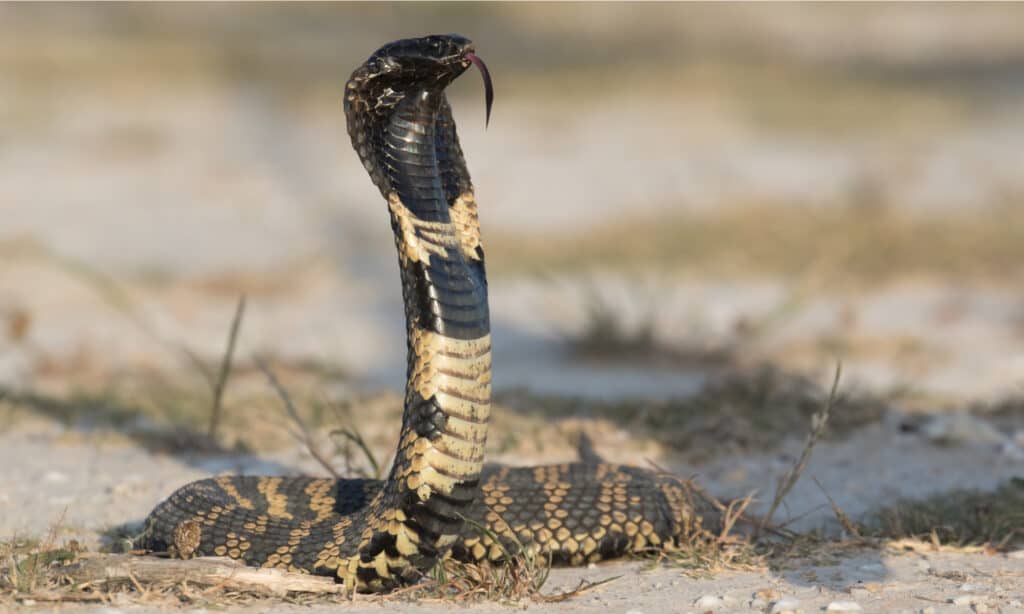
The spitting cobra can spit as far as 6.6 feet.
©Andre Coetzer/Shutterstock.com
If the archerfish is the sharpshooter of the water, consider the spitting cobra one of the best land-based shooters — with less accuracy, of course. Any cobra that spits toxic venom at a target is called a spitting cobra. The reptiles use fangs to spray venom into a target surface or the eyes of their attacker.
Spitting cobras spray this noxious mix through the holes near the tip of their fangs by squeezing the muscles around their poison glands. They also sometimes lunge forward to propel their venom further toward their target. When cornered, some species spit as far as 6.6 feet. Although the venom won’t kill the prey, it can blind them momentarily while the cobra goes in for the kill.
3. Bombardier Beetle
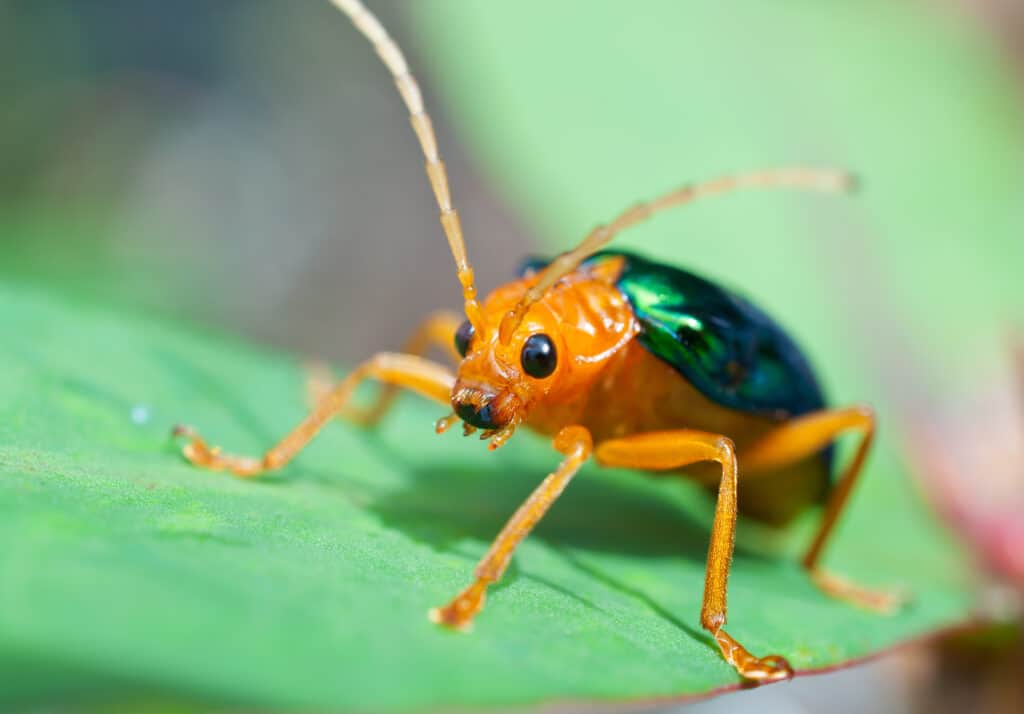
Bombardier beetles violently release and expel their boiling liquid with a loud popping sound.
©johannviloria/Shutterstock.com
The bombardier beetle is one of nature’s chemical killers, known for its ability to shoot hot and toxic chemicals from the tip of the abdomen. The beetle stores hydroquinone and hydrogen peroxide in its belly and a chemical reaction between the two chemicals cause a heat reaction. The reaction brings the mixture to the boiling point of water and produces gas that is ejected violently and can be fatal to insects.
Bombardier beetles violently release and expel their boiling liquid with a loud popping sound. The gland opening of some beetles can also rotate 270° to allow a considerably accurate discharge, and the gland stores enough chemicals to spray in all directions 20 times, enough to kill a predator.
4. Velvet Worm
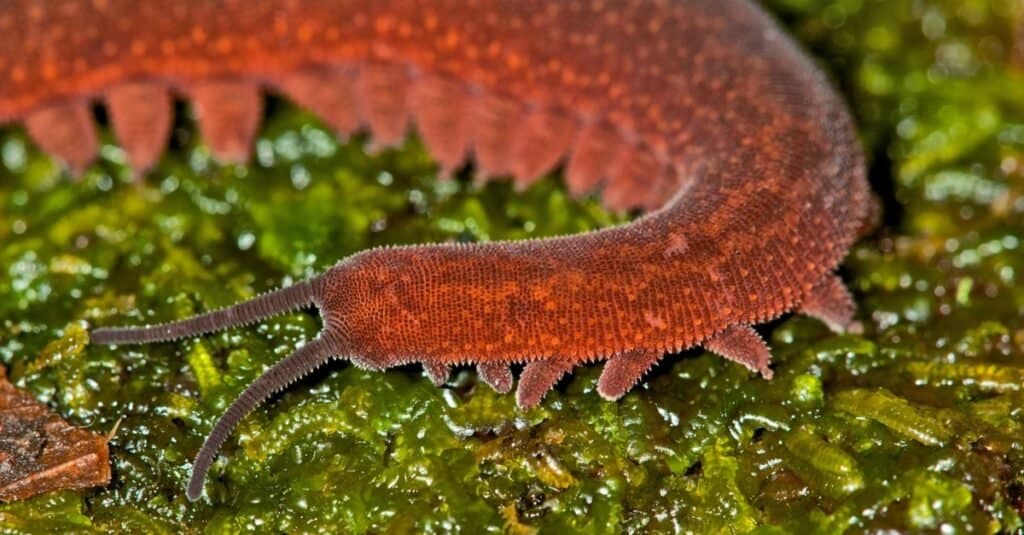
Velvet worms shoot slime that immobilizes prey.
©Pedro Bernardo/Shutterstock.com
Another animal that hunts by shooting at prey is the velvet worm. Velvet worms don’t have a particularly interesting appearance, but their precise shooting skills have earned them a place among the top animals that hunt by shooting their prey. The worms grow between about 0.2 and eight inches and have up to 13 pairs of legs. Their velveteen body is also divided into sections. On the third head segment, velvet worms have two openings to the left and right of their mouth. Here, they house a pair of large, internally-branched glands that secrete a milky-white slime. The worm can also connect to the slime conductor to increase its reservoir and serve as a buffer for pre-produced slime.
Velvet worms are voracious carnivores. They feed on termites, tiny spiders, and other small invertebrates. These worms typically catch their prey by squirting the sticky slimes on the prey’s body — trapping it. With no way out, the velvet worm can then bite off parts of its prey and proceed about its business like nothing ever happened. It’s an eerily efficient killing style for such a small animal.
5. Spitting Spiders
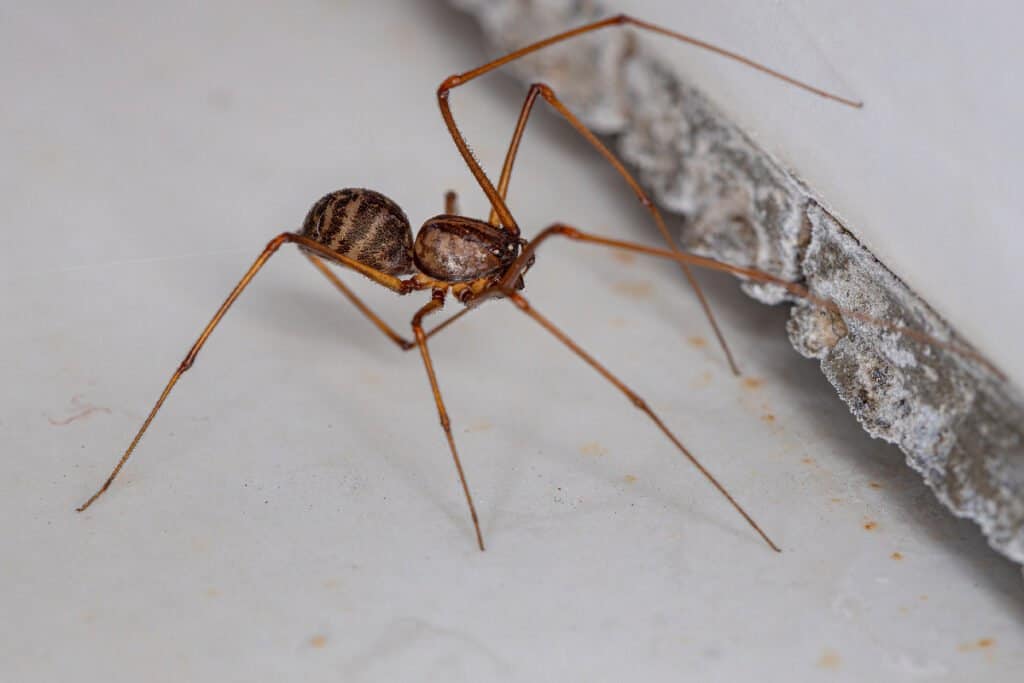
The brown spitting spider catches prey with venomous silk that it shoots from its abdomen.
©iStock.com/ViniSouza128
The spitting spider hunts its prey like the spitting cobra and velvet worm. However, the spider’s venom is more dynamic and even effective in operation. Spitting spiders is a family of araneomorph spiders that contains over 250 species. However, the Scytodes genus is the most popular. The spider catches prey by spitting a liquid that congeals on contact into a sticky and venomous mass.
The fluid produced by spitting spiders contains a mix of spider silk in liquid form and venom, immobilizing and envenoming small prey. The spit traps prey in a crisscrossed pattern. The spider can shoot this potent liquid trap at prey from a distance of about 0.39 to 0.79 inches (10 to 20 millimeters) away. Not only this, but the entire sequence of an attack lasts for only 1/700th of a second. Now, how’s that for a sharpshooter?
6. Pistol Shrimp
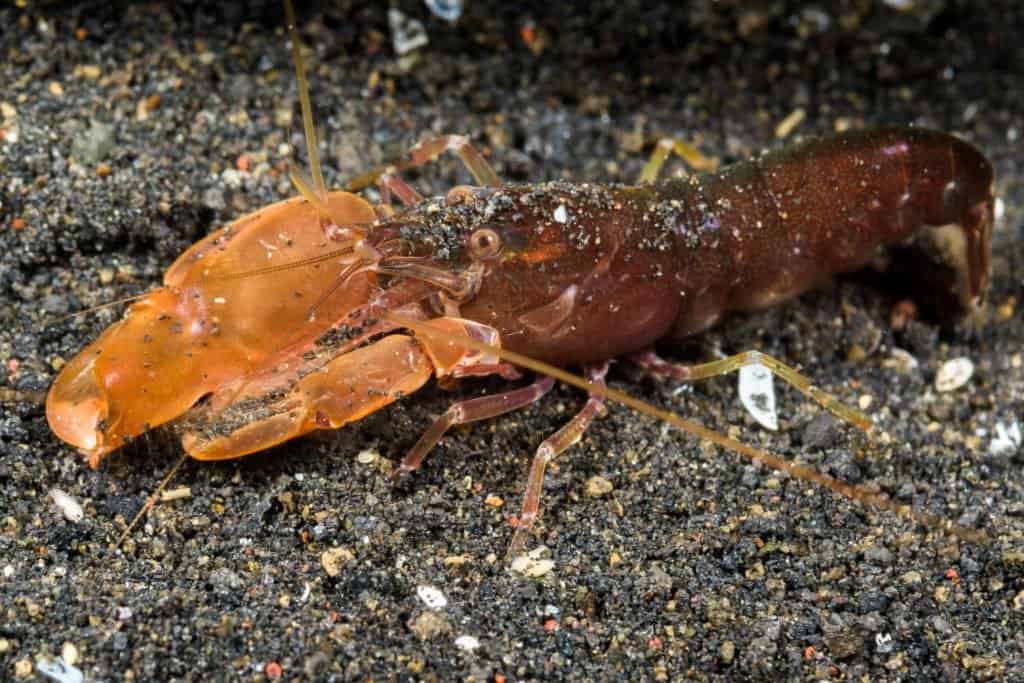
Pistol shrimps are noise makers of the ocean.
©Subphoto.com/Shutterstock.com
Have you ever shot a bubble gun before? The pistol shrimp is reputable for its accurate and powerful bubble shots. Alpheid shrimp, pistol shrimp, and snapping shrimp all belong to the family of caridean snapping shrimp. They are notorious for interfering with sonar and underwater communication in colonies and are the noisemakers of the ocean.
The pistol shrimp grows to 1.2 to two inches long and has a claw that is oddly larger than half its body. Instead of pincers, they have two pistol-like joints that emit powerful bubble waves. But while the human bubble gun is harmless, the pistol shrimp’s gun can do real damage. The bubbles released from this appendage are capable of breaking a glass jar or stunning larger fish when released. The bubble generates acoustic pressure of up to 12 pounds per square inch at a distance of 1.57 inches from the claws. It also reaches a speed of 62 miles per hour, and the duration is less than one millisecond. The prey won’t even see it coming.
7. Cone Snail
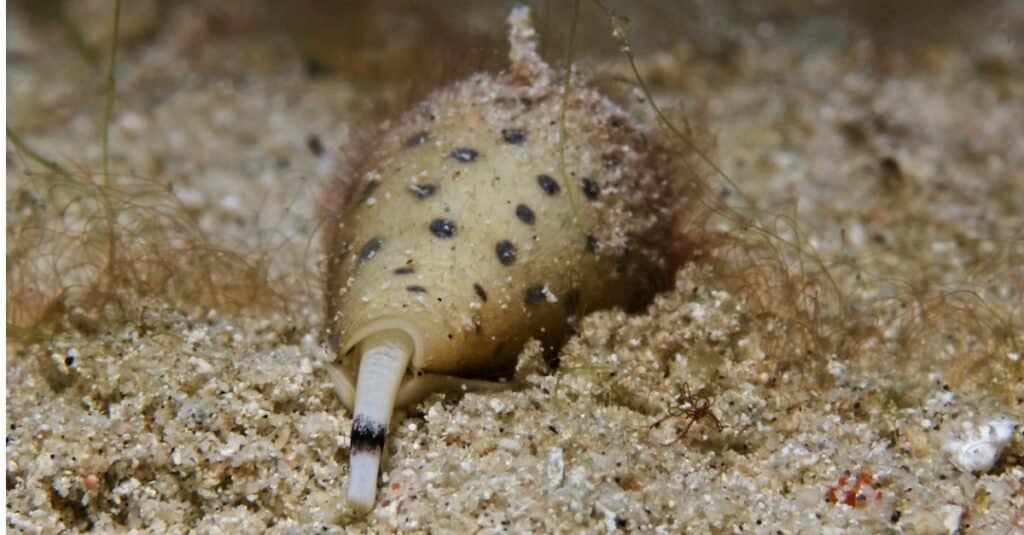
Cone snail preys on small bottom-dwelling fish and marine worms.
©iStock.com/scubaluna
The cone snail is a highly venomous sea snail whose venom can be fatal to even humans. However, humans are not the typical target, so you have nothing to worry about. The cone snail preys on small bottom-dwelling fish and marine worms with its venom gland and hypodermic needle-like radula tooth.
The snail’s tooth is similar to a dart or harpoon, and its venom contains different toxins. Each harpoon is a modified hollow and barbed tooth attached to the tip of the radula. When it detects prey, the snail extends its flexible tube towards it, loads the radula tooth with venom, and uses a powerful muscle contraction to fire it into the prey. The venom paralyzes the prey almost instantly so the snail can chew the unfortunate victim.
Conclusion
Humans are no strangers to shooting as a form of defense and a way to hunt animals in the wild. But thanks to evolution, many animals also hunt and prey from a distance by shooting projectiles. While most animal projectiles are harmless to humans, they are enough to stun and kill small and sometimes larger targets that serve as their food.
Up Next
- The Top 10 Incredible Animals That Dance
- 6 Incredible Survival Skills Animals Use to Live in Deserts
- Watch This Omnivorous Fish Hunt By Sharpshooting Its Prey
The photo featured at the top of this post is © Roberto Dani/Shutterstock.com
Thank you for reading! Have some feedback for us? Contact the AZ Animals editorial team.







